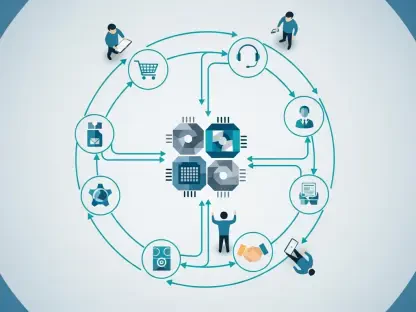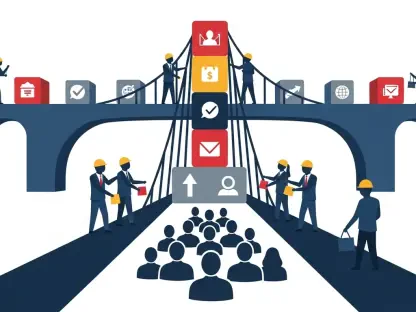Listen to the Article
Technology, geopolitical shifts, and an unstable economy are some of the pain points affecting the management of business these days—including Human Resources.
Like many other aspects that define your continuous and resilient success in the corporate world, employee benefits are also undergoing significant transformation. New generations are joining the workforce. They don’t only unlock a new age of talent and performance, but also bring new expectations regarding their contracts with organizations, setting new standards for attracting, engaging, and retaining highly performant talent.
To maintain a reputation as a top employer, your peers are switching their traditional plans for employee compensation and benefits, replacing them with modern and future-focused alternatives.
But what does your workforce value today—and how does it evolve beyond basic health insurance and retirement plans?
Find out in this article and discover the importance of delivering increasingly flexible, holistic, and employee-oriented packages of benefits that cater to diverse needs; from mental health services to work-life balance and financial wellness programs.
The Shift Toward Flexible Benefits Packages
One of the trends that’s completely changing the playing field for companies and what they use to attract talent lies in the move toward flexible and customizable benefits packages.
In previous decades, enterprises had a clear and straightforward path to success: a standard but robust set of benefits they’d offer to all workers, focused on time health insurance, paid time off, and retirement savings plans. But, the modern employee is no longer satisfied with a one-for-all approach. The workforce is growing more diverse than ever, with employees from different backgrounds, generations, and life stages that all desire different things from the organizations they dedicate their time and productivity to.
Flexible packages are taking the spotlight now—allowing them to choose what suits their individual needs best and delivering greater control over what they consider adequate compensation and benefits.
What does this mean? That, for example, your workers have the liberty to decide whether they wish to allocate more resources into their family health coverage, flexible work arrangements, mental health support; or even financial wellness tooling.
Of course, this shift didn’t happen overnight. It was driven by several factors. Particularly, Millennials and Generation Z are challenging management, decision-makers, and human resources departments in their quest to achieve high engagement rates. They’re more unpredictable than previous generations, no longer focusing solely on hard work and no play. Instead of following in the footsteps of their predecessors, they’re redirecting their attention to building work-life balance, prioritizing well-being, and getting meaningful benefits over traditional perks like bonuses or company cars.
This transition is heightened and accelerated by the fast-paced evolution of technology. Now, the entire workforce has the opportunity to make real-time adjustments to their chosen benefits—paired with an increasingly unstable economic landscape that forces them to focus solely on what will benefit them most in the long run.
Mental Health Services: Why Are They Becoming Critical for Your Employee Well-Being Program?
Many professionals in the business management field can argue that, in the last years, there has been one event that’s served as the catalyst for the transformation the corporate world is experiencing today: the COVID-19 pandemic. Throughout the challenging period of lockdowns and strained workplace dynamics, mental well-being took a spotlight. It has led to organizations realizing that employee mental wellness is not only integral to keeping workers loyal to their enterprise—but also essential for overall productivity and long-term performance.
Today, those employers that seek to outperform the competition and have access to top-level workers understand how vital it is to include robust mental health resources in their offering, from counseling services and mental health days to employee assistance programs and stress management workshops.
What’s worth considering for your own benefits packages in 2025? To maintain your edge as an attractive long-term employer, take a look at the following.
Telehealth and Virtual Therapy
The rise of digital health services don’t just benefit the overall population—they bring an unexpected benefit to the business landscape too. More employers are introducing them into their plans, offering convenient access to telehealth services and virtual therapy sessions with licensed professionals; reducing the stigma associated with in-person meetings and making workers more likely to seek help when needed.
Mental Health Days
Paid Time Off has been, for a long time, a point of friction between organizations and their employees. Offering dedicated mental health days and more flexible policies is the key to reducing that friction and avoiding future tensions. These empower your teams to take time off when it’s necessary without the added pressure of having to justify the need for a sick day. Not only does it emphasize the importance of taking breaks for mental wellness and encourage a more open culture, but it also positions your leaders to ensure that no one suffers from burnout or stress that might affect performance.
Training for managers
The quest to improve the mental well-being of your employees doesn’t stop at the benefits and perks you’re offering. It must move into the workspace, too, regardless of whether your teams work in the office or through virtual means. In addition to these advantages, organizations are starting to provide training for managers—meant to help them quickly pinpoint the signs of distress among their workers, offer the right support, and build a more empathetic corporate culture.
Financial Wellness: Your Key to Ensuring Long-Term Security for Employees
For a large part of the workforce demographic, performance issues and stress have a common cause: financial burdens, which have recently become a growing concern.
Workers are no strangers to economic instability or uncertainties. But the ones encountered in the last decade are straining even the most resilient individuals—from inflation to rising living costs and job uncertainty.
Companies are now taking action by expanding their benefits packages to include comprehensive, up-to-date, and future-focused financial wellness programs. Some of the elements of a well-crafted strategy include:
Student Loan Assistance
Student loans have been part of most citizens’ livelihood for decades. In the present, they’re felt more acutely than ever before—the burden accentuated by economic and geopolitical shifts. For Millennials and Generation Z workers, employers who are offering student loan repayment assistance shine the brightest on the job market. Some of your peers are even providing direct contributions toward their employees’ loan payments; while others take a more indirect approach through refinancing options or educational resources to help them manage their debt.
Retirement planning
Traditional 401 (k) plans no longer hit the spot for the modern worker. To keep up with expectations, companies are expanding their retirement benefits. Their main strategy involved personalized financial advice and planning tools that provide a more tailored solution for retirement savings. The help doesn’t stop there—some are partnering with financial planners to even connect their workforce to financial planners that offer insightful retirement guidance.
Emergency Savings Funds
After the harsh situation created by the recent pandemic, employers are increasingly focused on avoiding future crisis. Emergency savings funds and financial assistance programs are now an attractive part of a modern benefits package. They’re the safety net every worker needs to perform at their best without constant stress regarding their future; allowing them to gain peace of mind when facing critical situations such as medical bills, car repairs, and other unforeseen costs.
In Closing:
Today’s organizations face one straightforward reality: New generations are vastly different from the retiring ones, and their expectations are evolving—quickly.
In 2025, companies are expected to provide more than just traditional benefits like health insurance and retirement plans. Instead, they’ll need to offer comprehensive, flexible, and highly personalized plans, focused on employee well-being, financial security, and mental health.









